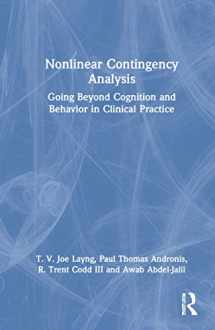
Nonlinear Contingency Analysis: Going Beyond Cognition and Behavior in Clinical Practice
Book details
Summary
Description
Nonlinear Contingency Analysis is a guide to treating clinically complex behavior problems such as delusions and hallucinations. It’s also a framework for treating behavior problems, one that explores solutions based on the creation of new or alternative consequential contingencies rather than the elimination or deceleration of old or problematic thoughts, feelings, or behaviors.
Chapters present strategies, analytical tools, and interventions that clinicians can use in session to think about clients’ problems using decision theory, experimental analysis of behavior, and clinical research and practice.
By treating thoughts and emotions not as causes of behavior but as indicators of the environmental conditions that are responsible for them, patients can use that knowledge to make changes that not only result in changes in behavior, but in the thoughts and feelings themselves.


We would LOVE it if you could help us and other readers by reviewing the book
Book review



